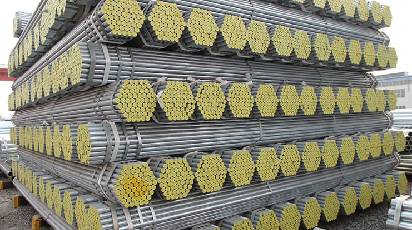Galvanized Steel Pipe, which has the dual advantages of corrosion resistance and long service life, and the price is relatively low, so now its utilization rate is getting higher and higher, but some users are welding galvanized Not paying attention to the pipe has caused some unnecessary troubles, so what problems should be paid attention to when welding galvanized pipes? Galvanized Steel Pipe manufacturer china introduces you.
1. The premise is to polish
The galvanized layer at the welding place must be polished off, otherwise bubbles, trachoma, false welding, etc. will be generated. It will also make the weld seam brittle and reduce the rigidity.
2. Features of galvanized steel pipe
Galvanized steel is generally coated with a layer of zinc on the low carbon steel, and the galvanized layer is generally 20um thick. Zinc has a melting point of 419°C and a boiling point of around 908°C. In welding, zinc melts into a liquid and floats on the surface of the molten pool or at the root of the weld. Zinc has a greater solid solubility in iron, zinc liquid will deeply etch the weld metal along the grain boundary, and low melting point zinc forms "liquid metal embrittlement". At the same time, zinc and iron can form brittle compounds between metals, these brittle phases reduce the plasticity of the weld metal, and produce cracks under the action of tensile stress. If welding fillet welds, especially T-joint fillet welds are most likely to produce penetration cracks. When galvanized steel is welded, the zinc layer on the surface and edge of the groove will be oxidized, melted, evaporated, and even white smoke and steam will be volatilized under the action of arc heat, which is likely to cause weld porosity. The melting point of ZnO formed by oxidation is relatively high, above 1800°C. If the parameter is too small during the welding process, it will cause ZnO slag inclusion at the same time. Because Zn becomes a deoxidizer. Produce FeO-MnO or FeO-MnO-SiO2 low melting point oxide inclusion slag. Secondly, due to the evaporation of zinc, a large amount of white smoke is volatilized, which has a stimulating and harmful effect on the human body. Therefore, the galvanized layer at the welding place must be polished away.

Galvanized Steel Pipe
3. Welding process control
The preparation of galvanized steel before welding is the same as that of general low-carbon steel. It should be noted that the groove size and the nearby galvanized layer should be carefully handled. In order to weld through, the groove size should be appropriate, generally 60~65°, with a certain gap, generally 1.5~2.5mm; in order to reduce the penetration of zinc into the weld, before welding, the galvanizing in the groove can be Solder again after the layer is cleared.
In actual work, centralized beveling is adopted, and no blunt edge process is used for centralized control. The two-layer welding process reduces the possibility of under-welding. The electrode should be selected according to the base material of the galvanized steel tube. Generally, low-carbon steel is generally used because of its ease of operation.
4. Welding technique
When welding the first layer of multi-layer welding seam, try to melt the zinc layer and vaporize and evaporate it to escape the welding seam, which can greatly reduce the liquid zinc remaining in the welding seam. In the case of fillet welds, the zinc layer is also melted as much as possible in the first layer and vaporized and evaporated to escape the weld. The method is to move the end of the electrode forward about 5~7mm. When the zinc layer is made After melting, return to the original position to continue welding. In the case of horizontal and vertical welding, if the short slag electrode such as J427 is selected, the tendency of undercut will be very small; if the front and back reciprocating bar technology is adopted, the defect-free welding quality can be o
